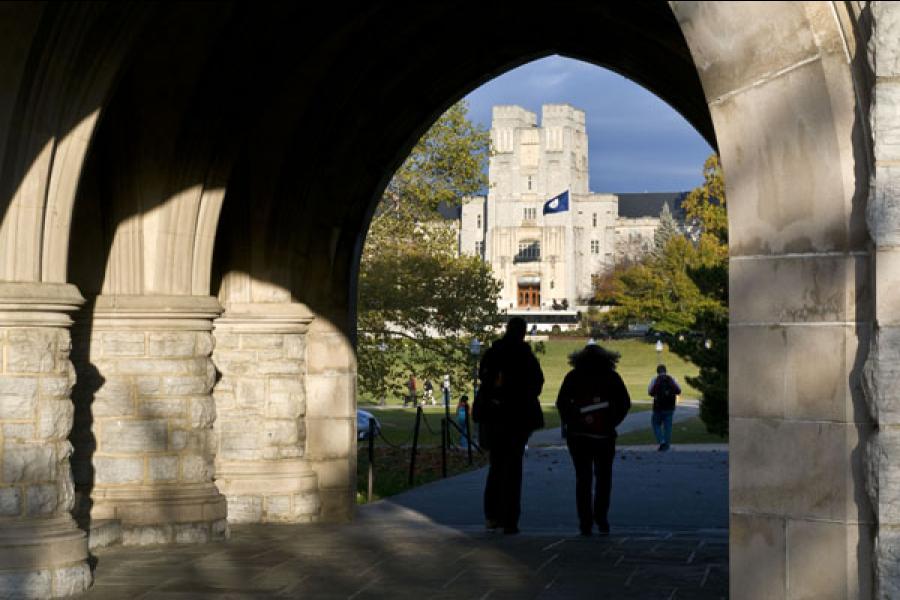
Back to India: US Universities Lose Sheen
The lure of getting a doctoral degree from the US is fading, as grants become meagre in the wake of the recession. America's loss is India's gain
When Bidya Binay Karak decided to get a Ph.D. in solar astrophysics, she didn’t consider going to America, the land that — lest we forget — put man on the moon. This, despite the fact that the US is widely upheld as the bastion of astrophysics research. The reason? “Institutes like the IISc [Indian Institute of Science in Bangalore] offer world-class master’s and doctoral programmes,” she says, as a matter of fact.
They are not the only ones who now find the US less attractive as a destination to pursue a doctoral degree.
“There is a drop both in the number and the quality of Ph.D. applications, more noticeably in the last two years.” says Anand Sivasubramaniam, professor of computer science and engineering, Pennsylvania State University (Penn State). “This year, of the more than 700 applications we received from prospective graduate students worldwide, the number of applications from top Indian institutes such as the IITs and IISc was in the single digit. Less than three years ago, this number was in the double digits,” he says. An article this February in The Chronicle of Higher Education reported a 50 percent decline in the number of new Indian graduate students this Autumn at the University of Georgia. The computer science department at California State University (Long Beach) saw a spate of prospective master’s students from India abandoning their application process midway.
The numbers are stark even for graduate courses. According to the US Council of Graduate Schools, in 2009, there was a 14 percent reduction in offers of admissions to prospective India-based students; a 16 percent drop in first-time enrollments from India; and a 12 percent decline in graduate applications from Indian students.
“It’s the beginning of a trend, an indicator that something is happening and that Indian students are not coming here like they did in the past,” laments Dr. Nathan Bell, director of research at the Council.
You don’t have to look far to find the reasons for this. With the US economy in a shambles, there are severe budget cuts at state-funded universities. The prospects of obtaining a full waiver of tuition fees are slim. Dwindling grant money also means that local students stand a better chance of getting a research fellowship than foreign students. So, many Indian students end up working for free. Last semester, Atulya Prasad, a master’s and Ph.D. candidate in biomedical engineering at New York’s Stony Brook University, worked as a research assistant sans the stipend.
The situation doesn’t improve upon graduation. The growing political backlash against the loss of American jobs, and the rising anti-immigrant sentiment means that getting a work visa — let alone getting a job — is as tough as it can get. So much so that now, even the lure of a US-located son-in-law is starting to fade. “The classic America-educated son-in-law syndrome is almost nonexistent as students, especially from tier 2 schools, hardly get jobs in the US after they graduate,” says Satyavrata Samavedi, a Ph.D. candidate in tissue engineering at the Virginia Institute of Technology (Virginia Tech).
But the recession is not the only reason for the drop in Indian students. Back in India, better funding, facilities and opportunities are attracting more students to the sciences.
The number of Ph.D. students pursuing physics at IIT-Bombay has increased steadily, says Urjit A. Yajnik, professor of physics at IIT-Bombay, who is on a sabbatical at McGill University in Canada. The total number of Ph.D.s at IIT-Bombay rose 49 percent from 1,028 students in 2003-04 to 1,528 in 2009-10. India is also attracting a trickle of top notch scientists from America. “Compared to even three years ago, there are more opportunities for teaching and research in India. We see more post-doctoral fellows in theoretical physics willing to take up jobs in India than in the US,” says Savdeep Sethi, professor of physics at the University of Chicago.
Recent Indian graduates from American universities are also opting to return home on the heels of visa barriers, longer job searches, and competition from more experienced employees seeking to re-enter the workforce. Of course, trimmed funding in the US also means that quality of research has fallen too. “I could have learnt a lot more if funding was available, because the scope of the research was scaled back,” rues Atulya Prasad. Karthik Bharath is another such. He is doing a Ph.D. in statistics at the University of Connecticut, known for its statistics department, but plans to return and teach in India. “Our department admits around six Ph.D. students each year. Last year, there were just two, and some recent students from China received no funding at all,” he says.
A study in 2008 by the Indian government’s Department of Science & Technology estimated that the total number of Ph.D.s (in the sciences) in India rose 62 percent from 3,886 in 1983 to 6,318 in 2003, the latest year for which data is available. This meager figure is hardly reason to bring out the marching band. But the good news: Nobel Laureate R.E. Smalley estimated that by 2010, 90 percent of all Ph.D.s (physical sciences and engineering) worldwide would comprise Asians living in Asia. The bad news for India: Most of these scientists will be from China.
Nevertheless, a degree from a top-rung US university still has high value. Virginia Tech’s Samavedi, like many others, is of the opinion that apart from leading schools like IISc, the IITs, or the Bhabha Atomic Research Center, the quality of higher education in India is just not up to snuff. But what is starting to change is that more smart-as-hell 20-somethings are passing up on tier 2 and 3 US schools.
“If Indian students can go to Harvard, Princeton, Caltech or Chicago, then they should go. No place in India can offer an intellectual environment comparable to what they will get in the top 10 American universities. But these days you can sometimes do a better Ph.D. in India than in a second-ranking American place,” says Arnab Rai Choudhuri, professor of physics at IISc.
Maybe this is why, apart from the top 10 US schools, which posted a marginal 1 percent increase in offers of admissions to students in India in 2009, offers made by the top 100 schools saw a drop of as much as 16 percent, according to the US Council of Graduate Studies.
That said, the number of graduate applications from tier 2 and 3 Indian schools is on the rise, spawning concern over a decline in the academic quality of incoming students. “Their weakness shows in the level of independent thinking,” says Rangarajan Pitchumani, professor of manufacturing at Virginia Tech.
Some of the new engineering institutes, scientists say, are simply not worth going to, because they don’t teach students to thrive in a culture of innovation. A small but growing ilk of scientists who returned to India to teach say the system of separating centres of research from centres of undergraduate and master’s teaching is ruining science education in the country. Additionally, the haphazard way in which government money is made available to the faculty is inhibitive.
The US economy, according to the US Department of Commerce, garners $17.8 billion annually from tuition fees and living expenses of self-financing international students. This revenue stream would clearly feel the impact.
Historically, the US has gained much from international diversity. Bell of the US Council of Graduate Schools says that in the short-term, economic losses from the drop in Indian graduate student population is being offset by a 17 percent increase in offers of admission to Chinese students.
But over the long-run, the impact could be significant. Subhasish Mitra, assistant professor of electrical engineering and computer science at Stanford University, cautions that numbers alone don’t tell the whole story. “It’s important to know what kind of students are not coming. That will reveal the extent of their impact,” he says.
A possible reduction in the number of top-level Indian students can potentially affect cutting edge research of new technologies in the US, and the innovation culture brought to bear by entrepreneurs of Indian origin who tend to come to the US as students, he adds.
The US Department of Education was concerned enough to send a delegation to India this February, co-led by Dr. Martha Kanter, undersecretary, to promote the viability of higher education in the US. More than a dozen schools were part of the programme. Bell sees the declining numbers as a warning sign. “We have a lot more competition from other countries and can no longer assume that students will inevitably come here,” he says.
The US can no longer assume that students will stay, either. A March 2009 study of foreign students conducted by Vivek Wadhwa of Harvard University found that only 6 percent of Indian, 10 percent of Chinese and 15 percent of European students (currently enrolled at American universities or had graduated before 2008) wanted to stay in the US permanently.
For some, though, it’s time to celebrate.
“The US has, for many years, leveraged off developing countries,” says Sivasubramaniam of Penn State. “It’s time a shift occurred. This is a boon for India.”
(This story appears in the 30 April, 2010 issue of Forbes India. To visit our Archives, click here.)
-
 Shiv Mukherjee
Shiv MukherjeeI think there are very good funding opportunities in Europe for students wanting to do research in science. The Marie Curie Programme of European Commission is one of the best examples of cutting edge and high quality science research.
on Apr 20, 2010















